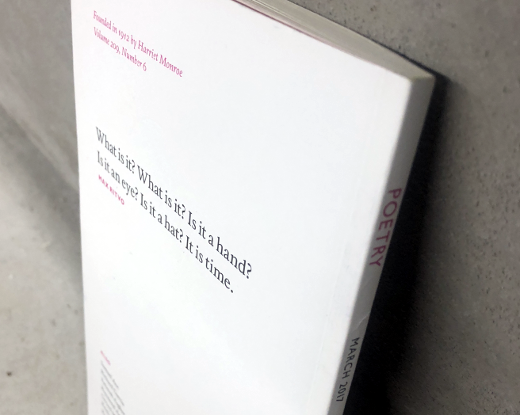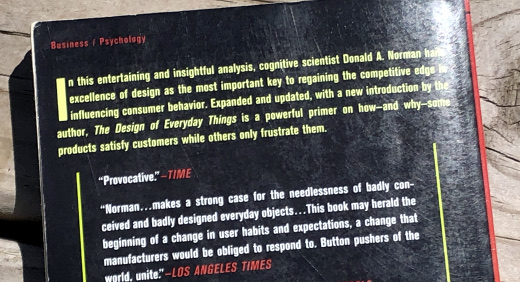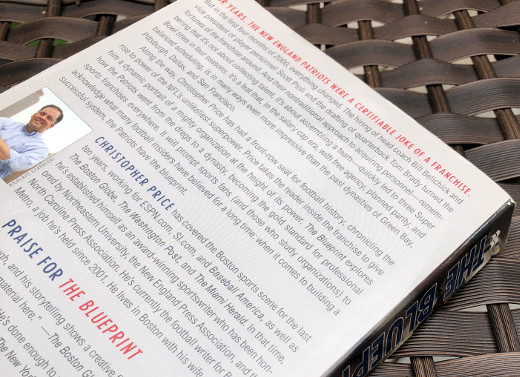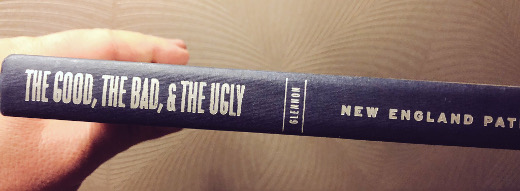My Takeaways From Rereading The Design Of Everyday Things
Shouldn’t things just work?
While on vacation last summer, we rented a car and got upgraded to a large SUV, a model I never drove before. When I got in I took a quick look around, pushed the start button and drove off. It got dark and foggy as we drove to the distant destination and the windshield started fogging up. So I looked and felt around the steering column and dashboard for the wipers and defogger, unfortunately without any luck. Having no other option, I pulled to the side of the road that really had no shoulder – much to the dismay of traffic behind me – and found a lever directly behind another lever on the steering column, and after a few twists activated the wipers and defogger and was able to see the rest of the way.
Has something like this happened to you? Have you tried to use something you think should just work, or find something on an item where you’d least expect it? This time it was a car, other times it’s a lamp, or even computer software. This thinking and frustration is the premise of the book The Design of Everyday Things by Donald Norman, an expert on usability.
Going thru some books I already read and still held onto, I decided to reread this classic book, and it brought back memories of the first time I read it; good memories from the material I learned in the book and bad ones because there’s still a lot of design issues out there that cause for poor user experiences. Those memories are structured into the following takeaways.
It’s not just us – When we have a poor user experience or trouble doing something, we tend to beat on ourselves. I have seen this a lot with computers, as some people are expecting a computer to just “do” something, and they often need more information, like a manual or someone to show them how, in order to complete a task. This happens to myself with software, Web sites or apps as well; I, someone who builds these, am expecting something or a certain outcome, and am not finding it that way. I chalk these up to bad design, where the one who created it never took into consideration how people would use it, or got feedback from observing people using it.
Internal vs. External Knowledge – This concept refers to internal knowledge as “in the head” as compared to external as “in the world” knowledge. Examples include knowing how to do something vs. having a manual or instructions on how to do it, to remembering a birthday to getting a calendar alert to remind you it is someone’s birthday. We bring internal knowledge into every situation, but sometimes need external knowledge to reinforce or remind or simply tell us how to do whatever it is.
There is good design out there – Where the book highlights a lot of bad design, it does talk about good design. I often reflect on an experience – e.g. driving a different car or going to a new place – and think of the user experience. I will smile if it was a good experience and complain if it wasn’t.
Bad design is an ongoing concern –The edition of The Design of Everyday Things I read was republished in 2002, and its original version came out in 1988 (note a later version was revised and expanded in 2013). Now 17 years after the republish, where a reader may get a chuckle when seeing some of the “dated” examples of items with poor design (for example, the telephone pictured), the principles written by Norman years ago are still very relevant today.
The Design of Everyday Things is not solely about computers or technology. I say this as perhaps my examples or even my background may imply this, plus the fact Donald Norman is a co-founder of Nielsen Norman Group - a firm that works in design and user experience, a lot of it centered on technology but not exclusively. I recommend this to any psychologist or student of the mind to anyone who gets easily frustrated when things don’t just work for them, or both. As I pass along all books, I am finally offloading this one, giving it to someone whom I met at a networking event a while back and to whom I offered the book… whether she has the internal knowledge of this, or needs this post as external knowledge, I will soon find out.
This is from The Hot Iron, a journal on business and technology by Mike Maddaloni.
Did you enjoy this? Subscribe to The Hot Iron by RSS/XML feed or Read by Email
Book Take-Aways •
Web Design •
(1) Comments •
Permalink
My Takeaways From The Blueprint
The success the New England Patriots has had over just under the last 2 decades is rare in modern sports. Not only 6 Super Bowls, but 9 overall appearances in the big game and being a perennial contender in an age of free agency with only a few variables common. It is an accomplishment that has won them both praise and scorn, with both sometimes coming from the same people.
So how did it happen? If you have been a reader here at The Hot Iron for a while, you will know I am a Patriots fan, going back decades, and once co-owned one of the Patriots’ first fan Web sites. It wasn’t always sunshine and rainbows for this football franchise. The fact that Monday Night Football wouldn’t hold games at their former stadium for years because of gunfire in the parking lot is one glaring example. But things changed – namely a new owner, coach and quarterback – and there’s the success we have today.
It didn’t happen overnight, and with the new owner it all didn’t fall into place right away either. This is the topic of The Blueprint: How the New England Patriots Beat the System to Create the Last Great NFL Superpower by Christopher Price. It gives a surprisingly detailed account of what led to their first Super Bowl and the next several seasons which followed it. Even for a true blue (and silver) fan as myself, I had some takeaways from this book.
I forgot a lot of details – Price goes into great detail in this book, and there were many facts and events that even I, someone who lived in the Boston area at the time of their first Super Bowl, didn’t remember. One glaring example was that at the end of the 2000 season, the season before their first Super Bowl win, they cut both Bruce Armstrong and Troy Brown. This was part of Bill Belichick’s “blueprint” for not paying players too much. Both were eventually resigned, albeit for lower salaries, and earned rings the following season.
Keep moving forward – If you don’t succeed, try, try again. This cliché phrase is really the mantra of the team. When new owner Bob Kraft hired Bill Parcells he had player personnel managed by someone else, Bobby Grier, which led to Parcells leaving after losing in Super Bowl XXXI. Kraft learned from this when he hired Belichick as coach, and Grier was fired. Belichick is famous for saying “On to (insert next opponent here)” meaning the last game is in the past, and they have to focus on winning the next one.
More than just a blueprint – If the success of the Patriots could truly be in blueprint form, then why haven’t other teams followed it? In order to execute on the blueprint, a team has to have the mindset and people to follow it. This is in itself a challenge, as it goes against how most teams in the league are managed. For example, having a head coach with full authority is not common, as most teams have a general manager or other role that is the true leader of what happens on the field. Many teams – and their owner’s egos – would have a hard time with this, no matter the sport.
Early on I mentioned The Blueprint only covered a few seasons after the Patriots’ first championship, and that’s because it came out in 2007, and now 12 years later I am reading and writing about it. Where I don’t exactly recall where I got it, I imagine it was sent to me by a publisher back in the day when I used to read more and write about those books more. Despite the dozen years that have passed since its words first hit paper, Price’s book is still a great read, especially for those who love deep details on sports. This book is now in the hands of a friend who sat next to me at many Patriots games.
This is from The Hot Iron, a journal on business and technology by Mike Maddaloni.
Did you enjoy this? Subscribe to The Hot Iron by RSS/XML feed or Read by Email.
Book Take-Aways • (0) Comments • Permalink
My Takeaways from Poetry Magazine March 2017

As my personal exploration into the world of writing continues, despite the infrequency you may notice here on this little blog, I have been reading more literary publications. These have included various Web sites, plus I continue to read December magazine’s biannual publications. Though I don’t put pen to paper as much as I’d like to, I am gaining inspiration for when I do through the works of others.
I happened upon a copy of Poetry Magazine a while back in a doctor’s office waiting room. Where I had heard about the century-plus year old poetry magazine, I had never read a copy. As the March 2017 copy before my eyes was in good company with other outdated periodicals in the seating area, I took it upon myself to put this edition to good use and literally took it. When I finally got to curl up with the paperback magazine, I not only moved forward with it on my creative journey, but I also took a fresh look back as well. I share those with you as my takeaways.
My knowledge of poetry is grade-school basic – If you’ve read The Hot Iron over time, it would come as no surprise that I spent more time in the computer lab than in any classroom. As a result, liberal arts classes like English and language never got the attention, years later I realize, they should have. When I think of a poem, I think of Dr. Seuss or the Man from Nantucket. Granted I have read some poetry in recent years in December magazine, after reading a pure poetry publication I realized my learning about this literary style ended around middle school.
The more I read the more I enjoy it – There are a wide variety of styles of poetry, some close to what I remember from school with meter and rhyming, and others where for me it’s hard to follow the formatting and subject of the poem. But as with many things, the more you are exposed to it, the more you will like it.
Learning that relates to you means more to you – The March 2017 edition of Poetry Magazine closes with what is called “Comment” which itself is not poetry, but rather a dialogue on poetry. Among the different poems, poets and styles the author of this piece discusses includes Stopping by Woods on a Snowy Evening, a poem by fellow New Englander Robert Frost. This was a poem I remember from childhood, mainly due to said geographic affiliation as well as the last lines of the poem which were planted in the back of my head back then, “And miles to go before I sleep, And miles to go before I sleep.“ After reading this in the final pages of the journal, it helped round out what I have been reading and experienced now with something I read and experienced many years ago.
Poetry Magazine is a periodical you can subscribe to or find at higher-end newsstands (if there is even one by you). Their Web site has a wealth of poetry to explore and read, and they also offer a Poem of the Day newsletter. With our inboxes filled daily with things we don’t want to read, it’s nice to have an interesting diversion among the unwanted refuse. As I pass along all that I have read, I neatly placed this copy of Poetry Magazine among some newspapers on the table of the coffeeshop where I wrote these takeaways. Perhaps someone else will learn something as they fulfill the promises they keep.
This is from The Hot Iron, a journal on business and technology by Mike Maddaloni.
Did you enjoy this? Subscribe to The Hot Iron by RSS/XML feed or Read by Email.
Book Take-Aways • Diversions • (2) Comments • Permalink
My Takeaways from The Great Halifax Explosion
Shortly after moving to the Boston area many years ago, and as the leaves fell and the snow covered the lawns, I learned how each year a Christmas tree was delivered to the City of Boston as a gift of the people of Halifax, Nova Scotia, Canada.
Why the tree was sent, though, wasn’t we’ll communicated. And to be honest, the thought of pursuing the story was never in me.
After reading The Great Halifax Explosion: A World War I Story of Treachery, Tragedy, and Extraordinary Heroism by John U. Bacon, not only did I learn the reason for the gift of the season, but the sad and amazing story that lead up to this perennial gift. Interestingly, I received a copy of this book from my sister as a Christmas gift.
With all of what was new to me, my takeaways from this book were few, but deep.
The story of the devastation of Halifax – In 1917, two ships collided in the harbor in Halifax, one of the ships being stocked to the gills with artillery and explosives with a final destination of England to support their efforts in World War I. The explosion destroyed most all of Halifax and killed thousands, and with the determination of the survivors and outside help – including much from Boston - the city was rebuilt.
I had no idea – Even as a self-proclaimed history buff I had never heard this story, despite growing up in New England. Though I honestly can’t say I’m surprised.
I want to visit Halifax – As I was reading The Great Halifax Explosion, I felt like I was there, over 100 years ago in the Canadian port city. I have never been to Halifax, but after reading this story I want to visit.
The Great Halifax Explosion is a page-turner, a compelling 360 degrees of the stories of the people, places and events that surrounded Halifax and their relationship with the world over a century ago. It is a well-written, great read that would be loved by history buffs, as well as anyone likes a story of tragedy and triumph. Or anyone who has admired the beautiful Christmas tree that Halifax sends to Boston each year.
As I pass along all books I read, I couldn’t think of anyone better than my wife’s cousin, who is also a history buff, but with much, much more breadth and depth. I recall years back meeting him with my wife when he was visiting Boston, sitting at the Trident Bookstore on Newbury Street, talking about many things including history. It’s interesting how much of life comes full circle in many aspects.
This is from The Hot Iron, a journal on business and technology by Mike Maddaloni.
Did you enjoy this? Subscribe to The Hot Iron by RSS/XML feed or Read by Email.
Book Take-Aways • (0) Comments • Permalink
My Takeaways From The Good The Bad And The Ugly New England Patriots
When people think of the New England Patriots football team, their success over nearly the last 2 decades is what likely comes to mind. From 5 Super Bowl titles to longtime quarterback Tom Brady, it’s not surprising. However not everything with the team has always been sunshine and rainbows.
I know – as a longtime fan and season ticket holder, I lived through some of the embarrassing times of the Pats. However these stories stretch back even before I was born! The scrappy, low-budgeted team that didn’t have a set home stadium for its first decade that became one of the most valuable, treasured – and hated – team; it’s a Cinderella story.
Sean Glennon tells many of the positive and not-so positive stories in The Good The Bad The Ugly New England Patriots, chronicling nearly the first half-century of the team. I knew this would be a great book as I really enjoyed Glennon’s first book on the team, This Pats Year, which chronicled one season of following the team and their fans. I found the book in final boxes I unpacked after a recent move, and had forgotten I had it. Where it was a treat to find it, I don’t remember when or how I had acquired it. All things considered, I have a few takeaways for both fans and non-fans of the team.
I had forgotten many stories about the Patriots – There were a lot of nuances and details of some of the highs and lows of the team over the years I had simply forgotten. Call it what you like, but many times as I was reading the pages of this book, I said a lot of “oh, yea’s” and “wow’s” to some of the tales told by Glennon. That alone made reading them along with the stories I remembered an enjoyable experience.
Journals like this need to be updated – It wasn’t until I was about a quarter way thru the book that I looked and found it came out in 2008 – 10 years ago! Why it took me so long to read it I can’t say, but I am glad that I finally did. As a lot has transpired with the team since then, it would be great to read an update to it. I won’t hold my breath on that thought for when I tweeted Glennon about it, I didn’t get the sense he shared my sentiment!
Where The Good The Bad The Ugly New England Patriots is written for fans of the team, anyone who is a football fan, especially those who lived through the years covered in the book, would find it a good read. Which is what I hope my friend whom I gave the book to felt as well, as he also lives away from New England and these kinds of stories may also elicit the same responses in him they did for me.
This is from The Hot Iron, a journal on business and technology by Mike Maddaloni.
Did you enjoy this? Subscribe to The Hot Iron by RSS/XML feed or Read by Email.
Book Take-Aways • Thrive • (0) Comments • Permalink









